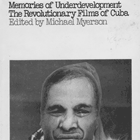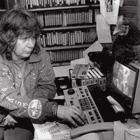The Experience of Citizens' Television In the United States: Public Access/Public Sphere
December, 1992
by DeeDee Halleck
For over twenty years, the United States has been the location of a unique community media experiment: the use of television channels and television equipment on an open "first come, first serve" basis. This experiment has evolved in over a thousand cities and towns to varying degrees of engagement by the public, and with varying degrees of cooperation from the cable corporations that are required to provide the opportunity.
The notion of access as implementation of a democratic project is neither recognized by the public nor acknowledged by the communication theorists. Even though there were a few brief appearances of a mainstream television "sit-com" (situation comedy) that had a youth program on public access as the plot base, in general public access does not figure positively in the American conciousness. This is largely due to the scorn and derision that is heaped upon it on network news and in the mass marketed periodicals. The "kinky" sex programs and the use of the medium by skin head racists are the two areas of public access programming that are regularly discussed to a broad public. There is little mention of the city council meetings, the welfare rights advocacy programs, or the homework helper shows that teens have organized. There are no reviews of the radical television experiments by video and performance artists, no coverage of the community ecological watch-dog programs. Understanding public access television from the vantage point of mass media is like understanding the city from the banner headlines in the tabloid newspapers. Even communications specialists have not taken the public access phenomenon seriously. There has been very little appreciation of public access from academics in communication. One could do a data search and come up with only a small amount of information on what is the central most extensive and innovative use of communication technology for open public exchange in the world.
Problematic Image
The sensationalist distortion by mass media and the neglect by academia of this important subject is no accident. There are sound material reasons that the media conglomerates that own the magazines and newspapers do not write about public access. Most of cable companies are themselves owned by the same media conglomerates. The media corporations would rather the popular image of public access be the kinky sex shows and the Nazis. If the cable companies promote true public access, they are lessening their chance to retake those channels. No matter how many channels the cable companies have, they always need more for the profit-driven services, from commercial programming such as the Weather Channel, or from Pay-Per-View services that host extra fee movies and sports events. Since media corporations see public access as an obligation they would rather not have, they do everything they can to diminish and denigrate the phenomenon.
The popular image that has been constructed around access contributes to the reasons that academics choose to ignore public access. The movement is associated with a lowly form of art(sleazy pornography) and an irrational and frightening politic (neo-Nazi's like Tom Metzger). Those who study policy issues are embarassed by these shows; those who promote democratic structures of regulation and rights of expression are ashamed to be associated with them. Both the sex shows and the skin heads are too marginal to inspire any interest from the "pop" culture theorists. All of this has left public access with few enthusiasts except for the several thousand activists who maintain the movement, and tens of thousands who have been trained at local stations and who have made hundreds of thousands of hours of programming.
Open To Scrutiny
One of the premises behind promoting the images of kinky sex and Nazis as the "signs" for public access is that they denote the failure of the idea. Instead of castigating the movement for these examples, instead of "killing the messenger", one might think about the fact that these very real elements of U.S. life are indeed, available for public scrutiny on television. Especially in the area of the skin-heads/Nazi use of these channels, one can make a strong case for the fact that public access brings issues of racism and religious prejudice out in the open. Pocatello, Idaho, is a case in point. Idaho is a state that has harbored many extreme right wing groups, and the access system in Pocatello was required by their own rules to run a weekly program by neo-Nazi Tom Metzger. However a group of local high school teens were so upset by the programming that they formed the "Pocatello Human Rights Club" and started producing a weekly call-in show in response to the racist series. In addition they held forums on prejudice at their high school and worked to build a community of people to take positive steps to address the situation of racism in Idaho. Having Tom Metzger and the skin heads on public access did not invent racism in Idaho, but it did bring this issue to a public forum, and inspired the formation of a community group to fight racism.
Public Sphere
In our society of privately owned suburban malls and individualized apartments in housing complexes without communal space, we have very few public forums. Public access uses television as a community forum. One of the criticisms of access channels is that very few people watch, that they are a waste, that the space is so much fallow land that should be producing market crops. While it may be true that in many cities, public access is not viewed by many, these few may be deeply involved in the programs they do watch. Public access is narrowcasting: producers often are aiming for a very specific, often very small community of viewers. There are however, many other programs on public access that are watched by large numbers of viewers. The viewership is also a function of how active the access center is in promoting the programming within the community. As Doug Kellner has noted: "A survey by the ELRA Group of East Lansing, Michigan, indicates that access is rated the fifth most popular category of television programming (ahead of sports, women's programming and children's programs, religious programs, etc.); and that 63% of those surveyed had an interest in access programming. Local surveys in Austin (Texas) have confirmed that access programs have a potentially large audience."
Emergency Network
Even if public access is rarely watched in normal times, it is there in case of emergency. In the town where I live, Woodstock, New York, access was used extensively during a water crisis: asbestos was discovered in the town water supply, dropping in big clots from cement-asbestos pipes and coming out in such a large amounts that drains were getting clogged with it, not to mention what it was doing to the stomachs and lungs(when they took a shower or used a humidifier) of local residents. There was a general panic, and many weeks of town hearings with reports from construction workers, lung specialists, and ecologists. During those weeks the entire town was glued to their local access channel for a steady stream of water-specific information. The local water may have been cloudy, but public access provided a local well of clear, however contradictory testimony, undiluted facts and first hand reports that were completely pertinent to the well-being of the community. The mainstream network channels in New York and Albany only gave the issue a sixty second news brief. The fact that Woodstock had their own local access channel ensured that when an emergency came, they had a channel to exchange information and "news" that was of essential nature to their lives.
Public Access: Creative Regulation
Public access television is a form of telecommunications regulation. There are four levels on which this regulation is justified:
- First is the fact that cable contracts are granting what is essentially a monopoly to a communications corporation to enable them to reach a particular market. Therefore this benefit needs to be compensated by a public component.
- The second reason is that in order to construct the physical infrastructure (in hanging the wires, sharing the telephone poles, having access to city sewer and tunnels) a cable company needs the cooperation and "right-of-way" from the municipality involved.
- Beyond these two legal justifications, there is the third philosophical argument that citizens have an essential right to information exchange. The assumption here is that if the First Amendment protects free speech in an age of face to face argument and print media, these rights are automatically extended into more complicated forms of technology as they are developed.
- There is also an argument that the distribution of most cable programming is via the extensive satellite systems which were developed with a heavy investment of public funds and thereforewh mandates a "pay-back" in the form of public benefits.
Most countries have some form of telecommunications regulation, although many of these have been eroded with the increasing expansion of market oriented systems. These regulations vary from country to country but the basic need is to ensure that the public benefits. Public access is a creative response to the need to regulate video distribution, and many studies have shown that not only the public benefits, but the cable corporations as well.
Public Access: Structures and Systems
The way public access is implemented varies greatly. A public access center might be located at a library, or a junior high school, or in a church basement. It could be set up in an abandoned firehouse or a new shopping center. Each municipality works with media organizers and non-profit representatives to find a home for the center. The organization of the space and outreach can be quite different from system to system or even within a given system. For example, Dallas, Texas, started with a plan to create centers in many different parts of the city. What they found was that some of the centers flourished and others languished. They eventually shut those centers that were not active and increased the ones that worked well.
Many access centers tend to become community hubs of activity. It is extremely important to place the center in a location where people feel safe and welcome, and where there is ample public transportation even at night. Since most cities are divided into neighborhoods of class and ethnic groups, the location of an access center in one specific neighborhood can be seen to favor one or another group. The building of a broad base of community contacts and relationships is essential to the success of access. The location in many ways defines future use.
The administration of public access centers can vary from appointed boards (usually appointed by the mayor and/or the city council) to elected boards (via ballot at the center, or to producers and users). Many access centers are administered by the cable corporations themselves. In general, the centers that have some degree of autonomy from the cable corporations seem to be the most successful and creative. There is an inherent conflict of interest between the cable companies (who want the channels for their own purposes) and the access community (especially the community of producers, who are in general an independent sort and are antagonistic to intrusion or control.)
Franchise Contracts
The franchise is the contract that the city makes with the cable corporation. Many franchises are extremely detailed. Cities have found that they need to spell out in tiny minutiae the terms of the agreement. For example, the public access contract between the cable company and Rochester, New York, has in it that the corporation must provide a certain amount of cameras and recording decks that are up to date (not more than a few years old). It also states that they must be kept in good order and that should they break down, they must be fixed within two weeks or replaced with new equipment. Cities learned the hard way that they needed to account for up-grade and maintenance. In the early days of cable franchising, many cities were flattered with offers from cable companies for multi-camera mobile trucks with switchers and effects generators. However there were no provisions for repair or engineering staff. The trucks and their fancy camera soon broke down and would often sit in the company's parking lot for years. To ensure funds for on-going maintenance of the access organization and the equipment, many cities have opted for detailed contracts and for a percentage of the subscriber fee (often up to five cents a month per subscriber.)
Public Access: Non-Profit Organizations (Ngo's)
One of the most developed uses of access has been by community organizations. The groups vary from animal rights groups to the boy scouts. Community organizations have found access useful to promote the work of their group, to encourage new members, and to inter-face with the public.
The Benton Foundation has published a handbook for community groups who are considering working with access. Speaking to organization representatives, Marge Nicholson gives several reasons why access can be useful for community groups:
"The most unusual aspect of public access is that enables your organization to speak for itself without an intermediary. On public access, you control the program content— not the commercial broadcaster, an investigative reporter, the local government, or the access channel manager....access can be an effective communications tool for your organization and should be considered as part of your organization's overall media plan."
Artists And Access
For many young artists, performance on public access is a unique opportunity to address a television audience. In addition, the fact that many cable studios have the ability to "go live" gives the artists an added opportunity to experiment with audience feedback. Most television today is tightly controlled, corporately produced. Making live TV in a local situation without commercial sponsors can be a new venue for artists. Recently many artists in the United States contributed to a live program about AIDS. Each year for the past several, artists and museums have closed galleries in commemoration of those within the art community who have died of AIDS. For this "Day Without Art" performers and visual artists coordinated a program that was transmitted via satellite to art museums, community centers and public access stations. The program contained segments from many regions, produced at media centers and public access studios. This was a coming together of a specific community for a national event. The public access stations across the country, and the facilities at the local level in many cities, enabled the production to be seen by a nationwide audience.
Public Access: Public Dissent
Public access has been a public forum for dissent. The program for AIDS was distributed by a group that also made use of access during the Gulf War. For the past six years, Deep Dish has been building up a base of community producers, graphic artists and performers ready to contribute to a common project, channels willing to run these often radical shows, and activists who promote and distribute the programs in their communities. The value of a collaborative infrastructure was demonstrated in the days preceeding the Gulf War. Video activists in the U.S. predicted the position of main stream media having seen the sort of news censorship and uncritical portrayal of military actions that were exerted during the invasions of Granada and Panama. As early as August 1990, "camcorder commandos" were accompanying demonstrations against the military deployment to Saudi Arabia and witnessing sit-ins at recruitment stations. The Gulf Crisis TV Project sent out a call for tapes in November and began collecting sequences from peace activists, community meetings and guerilla theater performances. By mid-December, 200 tapes, some edited, some raw footage, had been received from all over the country. This material was organized into ten half hour programs which combined demonstration footage with investigative interviews on the military and energy industries, on the media itself (and their financial ties to the military) and on the racism inherent in media coverage and aggressive foreign policy. There was an almost total suppression of these issues in main stream media.
Since the Vietnam era during which the media was blamed for "prolonging the war" by supporting the peace movement, there has been a concerted effort to ridicule and minimize any pacifist options or critical evaluation of war. Alternative views have remained localized at rallies and teach-ins, rarely heard in national forums. However this time, with the infrastructure of an alternative network of public access stations, activists and video producers in place, the Gulf Crisis TV Project was able to distribute their programs to hundreds of channels in a very short time. With massive organizing by local peace groups with phone campaigns and in some cases picketing local stations, this national series was also seen on many of the channels of the more restricted PBS network, the government-supported public television.
Community Based Reports
The opening of the first show emphasized the regional diversity: a montage of marching demonstrators is indentified with bold lettering of the names of the cities: Minneapolis, Fort Wayne, New York City, San Francisco, Pittsburgh, Chicago, Milwaukee, Wisconsin, etc. Those who were against the Gulf War constituted a marginalized community that transcended geographic boundaries. With the Gulf Crisis TV Project, this community found voice through an alternative communication system. These were not news reports by correspondents sent into seperate communities, but work contibuted by the communities themselves, collected and compiled by volunteers who identified with the concerns and issues presented. The tapes intercut testimonies with short video art segments, with guerilla theater pieces, with appropriated footage from network news that had been reworked and critiqued. Instead of patriotic soldiers boasting of "hits" that frequented the network news, GCTVP brought out nervous and anquished military resisters, facing certain jail sentences, but who openly solicited that other military personnel join them. The graphics included the phone numbers for military counseling. The tapes brought those aspects of life in the United States that the military analysts did not mention. The enormity of the war seen in contrast with the lack of information on network TV created a contradiction that was felt by most of the U.S. public. Polls taken during the war repeatedly found that people did not trust the media. By constant referral to the limitations of information, the Gulf Crisis TV Project provided an alternative and a constant critique at the same time.
The project provided information where there was none and voiced the rage of a people ignored and isolated. The assumption on mainstream television was that there was total acquiescence of the people of the United States to the patriotic fervor of the Persian Gulf War. The network television did not allow for difference. This project was based on the notion that there was a community of people who differed with the government. They were able to find voice on public access.
The kind of national projects that The Gulf Crisis TV Project and Deep Dish represent are a way of linking local producers and access persons into a production community that gives support and encouragement to public access producers and organizers. In general, access producers are often isolated and unappreciated, often in constant arbitration with the cable company or the local municipality over this or that issue of transmission and budget.
Public Access: Problems Of Implementation
A major problem at public access facilities is staff burn-out. A lively public access center is an exciting place to work and demands energy and dedication from the staff. Often the staff is young and enthusiastic, but unable to organize their time and delegate authority. Administration of a center that is truly functioning to the needs of the community can be very stressful. Access becomes the place where greivences are heard, where anger is vented, where activism originates and where hope is ignited. This is all exciting, but exhausting for those who must play host to a diverse range of community personalities. The best remedy is an experienced community board that can assist in crises, and can spot the potential for staff burnout before it's too late, and help protect the overall organization from problematic individual and organizational producers..
As I have pointed out in the introduction of this paper, there are problems with the public image of access. This can often be offset with a vigourous push for publicity at the local level. However, this is the "Catch 22" of public access: publicity can insure local support from city councils and the local public access boards of directors, but each item of publicity brings in new users, and more demand on what are usually already stretched equipment budgets and studio time. Public access has the same problem that many non-profit agencies: a constantly increasing need and a decreasing budget. Successful access centers coordinate outreach publicity with a push for increased budgets from city councils and state arts funds.
Public Access As An International Model
The beginnings of implementation of public access in the United States came at a unique and very special time: the early and mid-seventies. The sixties were over but many community organizers were still active. Portable video equipment sparked interest in media for community activism. The cable companies were eager to please the cities, and the cities eager to implement cable in a way that did not look monopolistic. All of these came together to enable this unique process to begin. I am not sure it is replicable in other places, but there are important lessons to be gained from studying public access in the United States:
- For a relatively low cost, a community television system can be developed in neighborhoods and towns.
- Communities benefit greatly from open and unrestricted access to telecommunications equipment and channels for exchange.
- The viewing public responds actively to programs that meet their local needs for information and local documentation of entertainment.
- Creative media people and visual and performance artists find access to equipment and channels useful and inspiring.
- Local access programming on local issues becomes extremely useful during crises.
- The expression of even repugnant points of view is important for initiating public dialogue on sensitive subjects.
Back to Theory






